Investigation of the Influence of Wake Field Characteristic Structures on Downstream Targets Using the POD Method
Abstract
:1. Introduction
2. Numerical Solution Approach for Low-Speed Flow
3. POD Method and Its Application
3.1. POD Method
3.2. Validation of the Snapshot POD Algorithm
3.3. Methods for Generating Various Scales Inflow for Flow Simulation
4. Results and Discussions
4.1. Numerical Simulation of the Wake Field of Low-Speed Parallel Double Cylinders in the Pre-Domain
4.2. POD Analysis of the Wake Flow Field in the Pre-Domain
4.3. Verification Analysis of the Full-Order Wake Field Generating Method in Pre-Domain
4.4. Effects of Various Scale Flow Structures of the Wake on the Target Object for Different Modes in Post-Domain
5. Conclusions
- The flow around the doubly parallel cylinders demonstrated a synchronized and reverse vortex shedding pattern, and the vortex structure along the flow direction remained unchanged in a relatively long region behind the two cylinders until the dimensionless inter-distance was G = 1.5. The vortex shedding pattern of the double-cylinder wake exhibited an alternating and flipping vortex shedding pattern that tilted toward one of the cylinders during a certain period of time for the dimensionless inter-distance of G = 0.35;
- The wake modal structure for G = 1.5 was more compact than that in the case of G = 0.35, and the wake mode for G = 1.5 was generally smoother and more regular. The modal structure evolution with increasing modal order and the shedding were compatible with each other, and the higher-order modal structure was relatively more scattered and smaller in scale;
- The wake field for the case of G = 1.5 only required the first five modes to capture the overall flow structure, and the lift and drag coefficients obtained from the fixed downstream object matched those obtained with the full wake field. In contrast, the wake field in the case of G = 0.35 required about the first thirty modes to roughly capture the trend of the flow development process;
- For the case of moving downstream target object, for the wake with G = 1.5, the aerodynamic properties of smaller downstream objects had less influence on the response of higher-order modes with smaller scales. For the wake with a dimensionless inter-distance G = 0.35, due to the scattered modal structures, the aerodynamic characteristics of the three target objects with different sizes had less influence on the response of the first three large-scale modes, which is directly related to the relative scale of the target object flow structure. Meanwhile, the aerodynamic characteristics of the flow structures of the wake at inter-distances of G = 1.5 and 0.35 exhibited consistent responses to the target object at different times, which indicated that the flow structures of the wake exhibited consistent aerodynamic characteristics on the target object at different times.
Author Contributions
Funding
Data Availability Statement
Acknowledgments
Conflicts of Interest
References
- Qu, F.; Lu, C.; Jiang, Z.F.; Wang, T. CFD numerical simulation of ship air-wake. Chin. J. Ship Res. 2009, 4, 23–27. [Google Scholar]
- Hotelling, H. Analysis of a complex of statistical variables in principal components. J. Educ. Psychol. 1933, 24, 498–520. [Google Scholar] [CrossRef]
- Krath, E.H.; Carpenter, F.L.; Cizmas, P.G.A.; Johnston, D.A. An efficient proper orthogonal decomposition based reduced-order model for compressible flows. J. Comput. Phys. 2021, 426, 109959. [Google Scholar] [CrossRef]
- Holmes, P.; Lumley, J.L.; Berkooz, G. Turbulence, Coherent Structures, Dynamical Systems and Symmetry; Cambridge University Press: Cambridge, UK, 1996. [Google Scholar]
- Lumley, J.L. The structure of inhomogeneous turbulent flows. In Atmospheric Turbulence and Radio Wave Propagation; Nauka, Moscow, 1967; pp. 166–178. Available online: http://a.xueshu.baidu.com/usercenter/paper/show?paperid=dd09155296faa5589ab06b9d4f86b27b (accessed on 8 August 2023).
- Sirovich, L. Turbulence and the dynamics of coherent structures. I. Coherent structures. Q. Appl. Math. 1987, 45, 561–571. [Google Scholar] [CrossRef]
- Premaratne, P.; Tian, W.; Hu, H. A proper-orthogonal-decomposition (POD) study of the wake characteristics behind a wind turbine model. Energies 2022, 15, 3596. [Google Scholar] [CrossRef]
- Kumar, M.; Vanka, S.P.; Banerjee, R.; Mangadoddy, N. Dominant modes in a gas cyclone flow field using proper orthogonal decomposition. Ind. Eng. Chem. Res. 2022, 61, 2562–2579. [Google Scholar] [CrossRef]
- Sinha, A.; Ivln, P. Investigating wake structures in flow past oscillating cylinder using proper orthogonal decomposition. arXiv 2022, arXiv:2201.09839. [Google Scholar]
- Fureby, C.; Tabor, G.; Weller, H.G.; Gosman, A.D. A comparative study of subgrid scale models in homogenous isotropic turbulence. Phys. Fluids 1997, 9, 1416–1429. [Google Scholar] [CrossRef]
- Lamballais, E.; Lesieur, M.; Metais, O. Probability distribution functions and coherent structures in a turbulent channel. Phys. Rev. E 1997, 56, 6761–6766. [Google Scholar] [CrossRef]
- Wang, P.; Bai, X.S. Large eddy simulations of turbulent swirling flows in a dump combustor: A sensitivity study. Int. J. Numer. Methods Fluids 2005, 47, 99–120. [Google Scholar] [CrossRef]
- Zhou, Y.; Mahbub, A.M. Wake of two interacting circular cylinders: A review. Int. J. Heat Fluid Flow 2016, 62, 510–537. [Google Scholar] [CrossRef]
- Chen, X.; Liu, L.; Yue, Z.J. Reduced order aerothermodynamic modeling research for hypersonic vehicles based on proper orthogonal decomposition and surrogate method. Acta Aeronaut. Et Astronaut. Sin. 2015, 2, 462–472. [Google Scholar]
- Chang, K.S.; Song, C.J. Interactive vortex shedding from a pair of circular cylinders in a transverse arrangement. Int. J. Numer. Methods Fluids 1990, 11, 317–329. [Google Scholar] [CrossRef]
- Menter, F.R. Two-equation eddy-viscosity turbulence models for engineering applications. AIAA J. 1994, 32, 1598–1605. [Google Scholar] [CrossRef]
- Zhao, N.; Jiang, Y.; Peng, L.L.; Chen, X.W. Fast simulation of nonstationary wind velocity fields by proper orthogonal decomposition interpolation. J. Wind Eng. Ind. Aerodyn. 2021, 219, 104798. [Google Scholar] [CrossRef]
- Abbaszadeh, M.; Dehghan, M.; Khodadadian, A.; Noii, N.; Heitzinger, C.; Wick, T. A reduced-order variational multiscale interpolating element free Galerkin technique based on proper orthogonal decomposition for solving Navier-Stokes equations coupled with a heat transfer equation: Nonstationary incompressible Boussinesq equations. J. Comput. Phys. 2021, 426, 109875. [Google Scholar] [CrossRef]
- Yang, S.; Wu, B.S. The numerical simulation of two dimensional circular flow. Shipbuild. China 2007, 48, 533–540. [Google Scholar]
- Fang, Y.Y. Flow field selection and mesh generation of 3D numerical simulation of flow around a circular cylinder. J. Waterw. Harb. 2009, 30, 70–76. [Google Scholar]
- Meneghini, J.R.; Saltara, F.; Siqueira, C.L.R.; Ferrarijr, J.A. Numerical simulation of flow interference between two circular cylinders in tandem and side-by-side arrangements. J. Fluids Struct. 2001, 15, 327–350. [Google Scholar] [CrossRef]
- Wu, G.X.; Hu, Z.Z. Numerical simulation of viscous flow around unrestrained cylinders. J. Fluids Struct. 2006, 22, 371–390. [Google Scholar] [CrossRef]
- Ding, D.W. Two-Dimensional Numerical Simulation of Flow around a Cylinder and Vortex-Induced Vibration; Doctor-Tianjin University: Tianjin, China, 2010; Available online: https://kns.cnki.net/kcms2/article/abstract?v=3uoqIhG8C475KOm_zrgu4lQARvep2SAkWGEmc0QetxDh64Dt3veMp0sEcugM_LeKLl76NlUs3SfgyRdXir0528PSfo5sbyET&uniplatform=NZKPT (accessed on 8 August 2023).
- Chen, Y.H.; Yang, S.C.; Yang, J.Y. Implicit weighted essentially non-oscillatory schemes for the incompressible Navier-Stokes equations. Int. J. Numer. Methods Fluids 1999, 31, 747–765. [Google Scholar] [CrossRef]
- Martinez, V.; Azzopardi, J.G. Invasive lobular carcinoma of the breast: Incidence and variants. Histopathology 1979, 3, 467–488. [Google Scholar] [CrossRef] [PubMed]
- Liu, S.; Fu, S. Numerical simulation of flow past two cylinders in tandem arrangement. Chin. J. Comput. Mech. 2000, 17, 260–266. [Google Scholar]
- Zhang, Q.S. PIV Measurements of Unsteady Characteristics of Separated and Reattaching Flow on Finite Blunt Plate—Vortex Dynamics Analysis Using Proper Orthogonal Decomposition and Dynamic Mode Decomposition; Doctor-Shanghai Jiao Tong University: Shanghai, China, 2015; Available online: https://kns.cnki.net/kcms2/article/abstract?v=3uoqIhG8C447WN1SO36whLpCgh0R0Z-ifBI1L3ks338rpyhinzvy7GQKVVP3Xa6CRdgoOvFrvg8DF2ichygiv_BcOr2Czj2h&uniplatform=NZKPT (accessed on 8 August 2023).
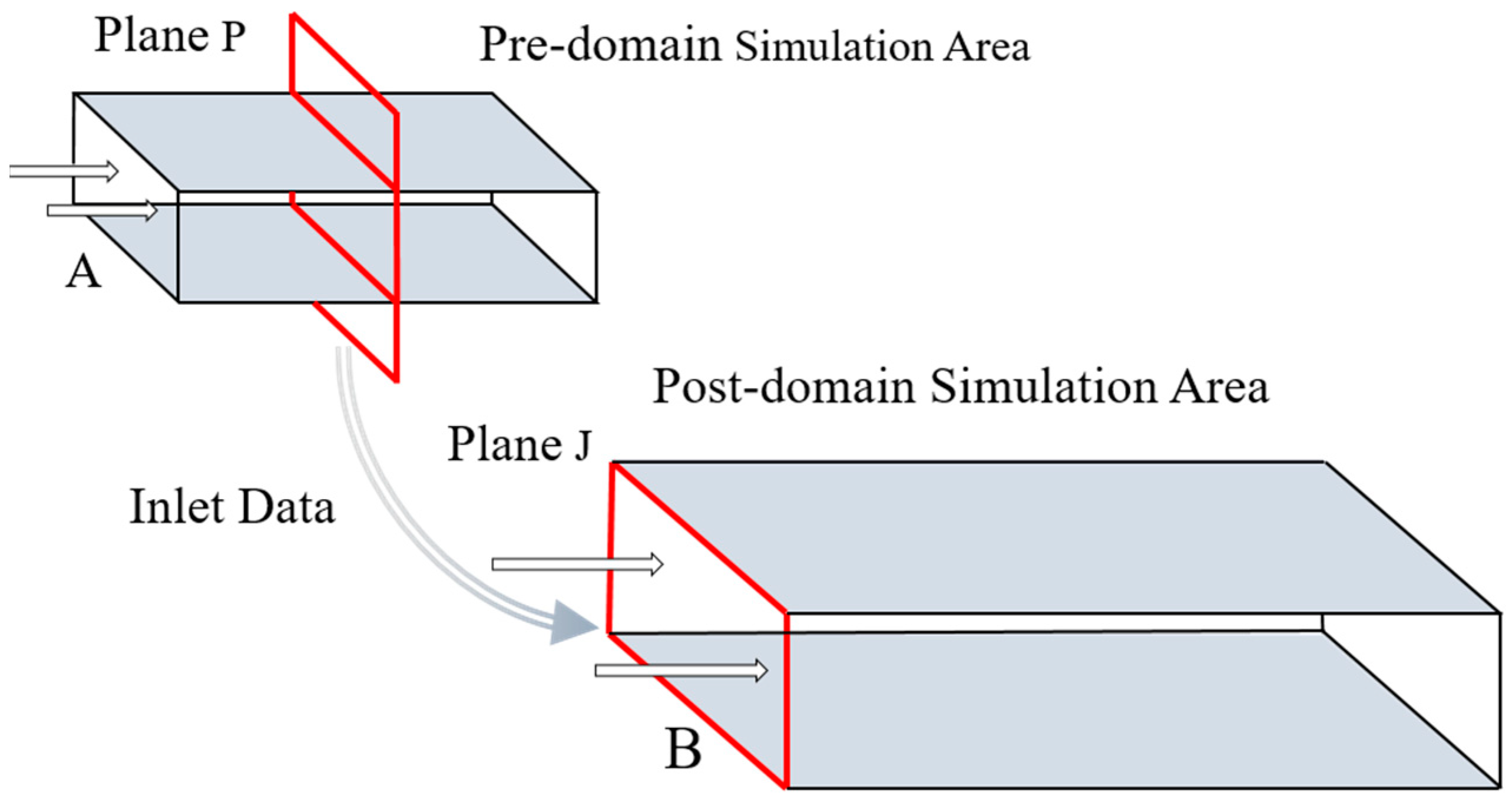

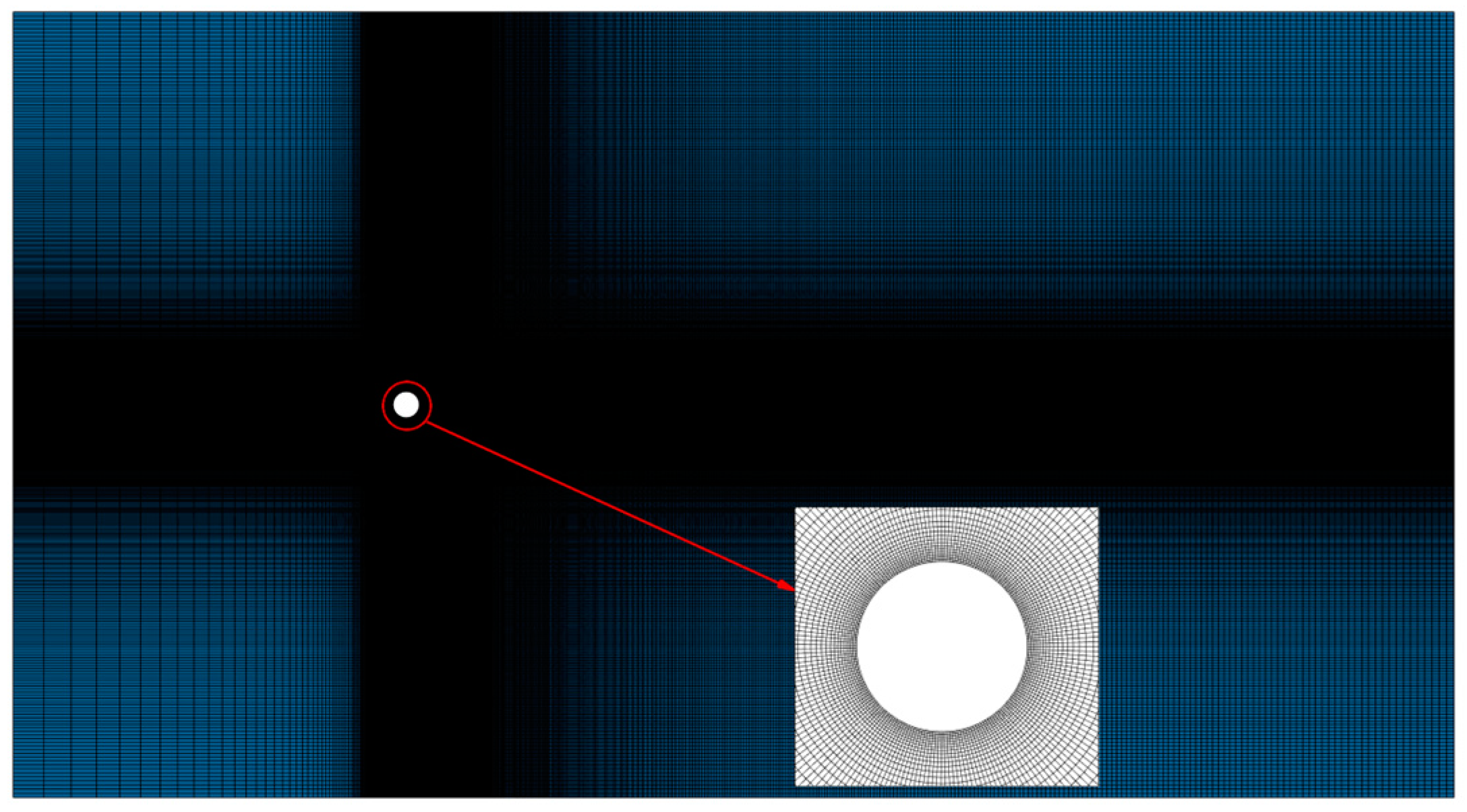
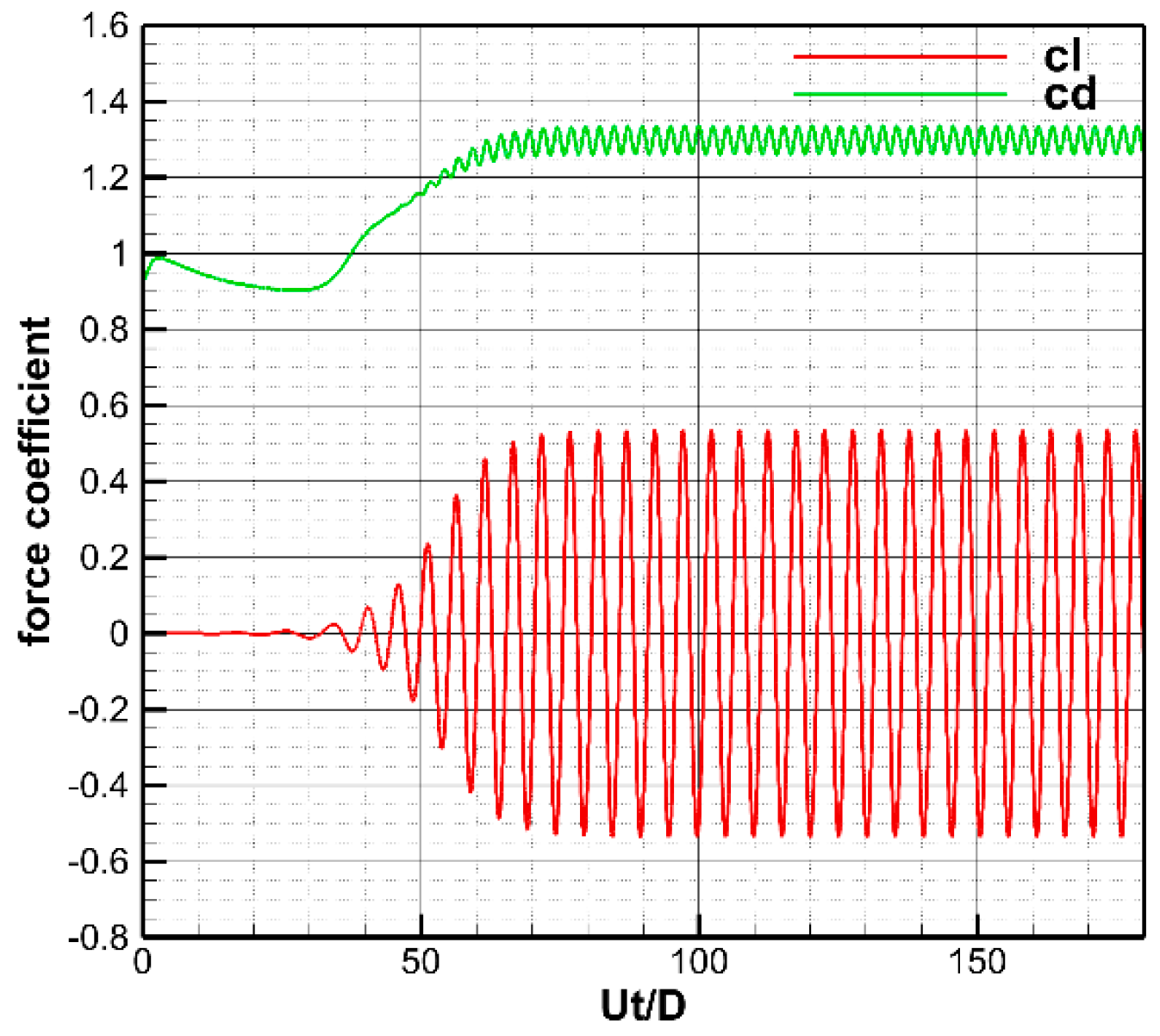



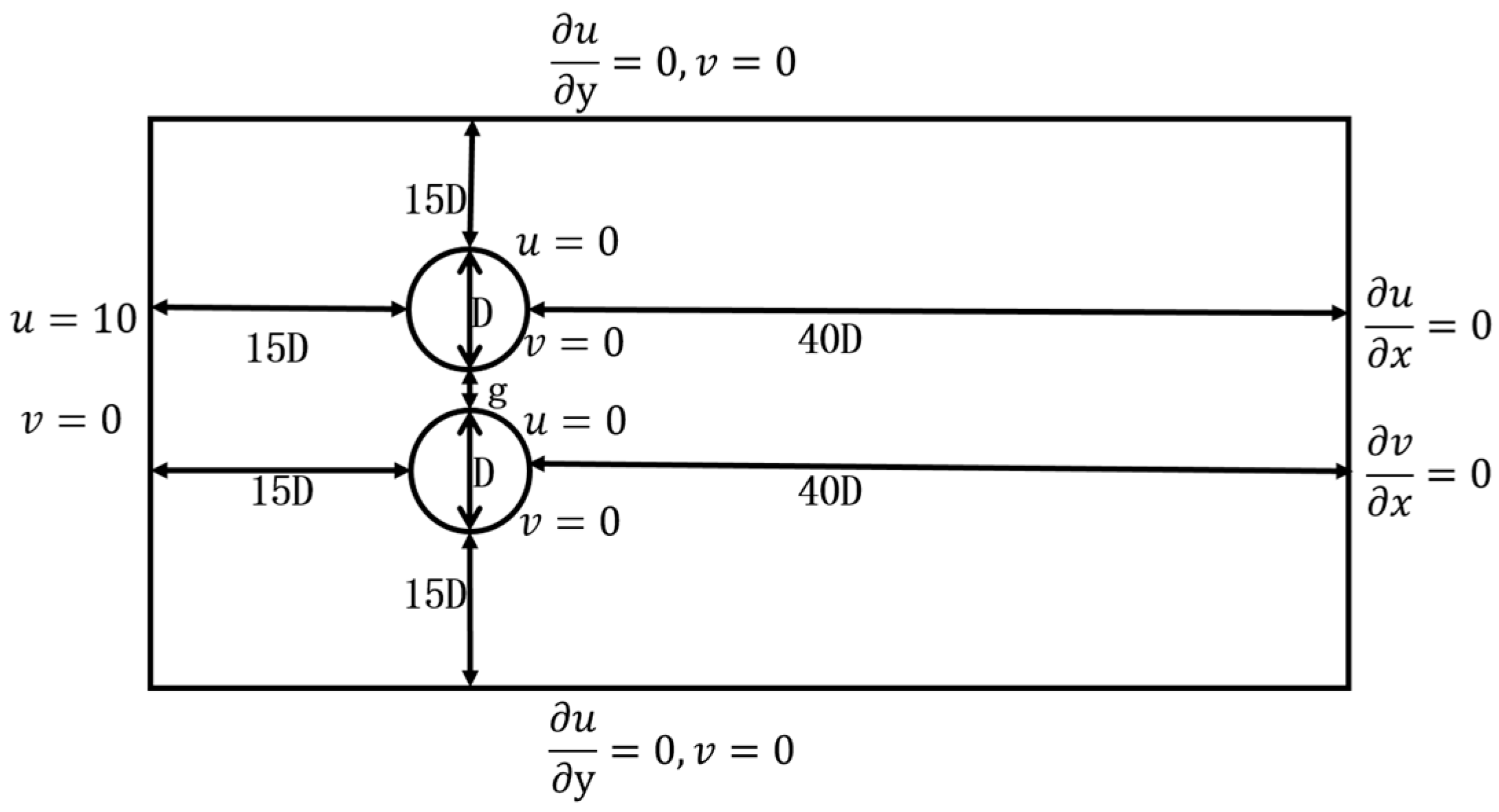
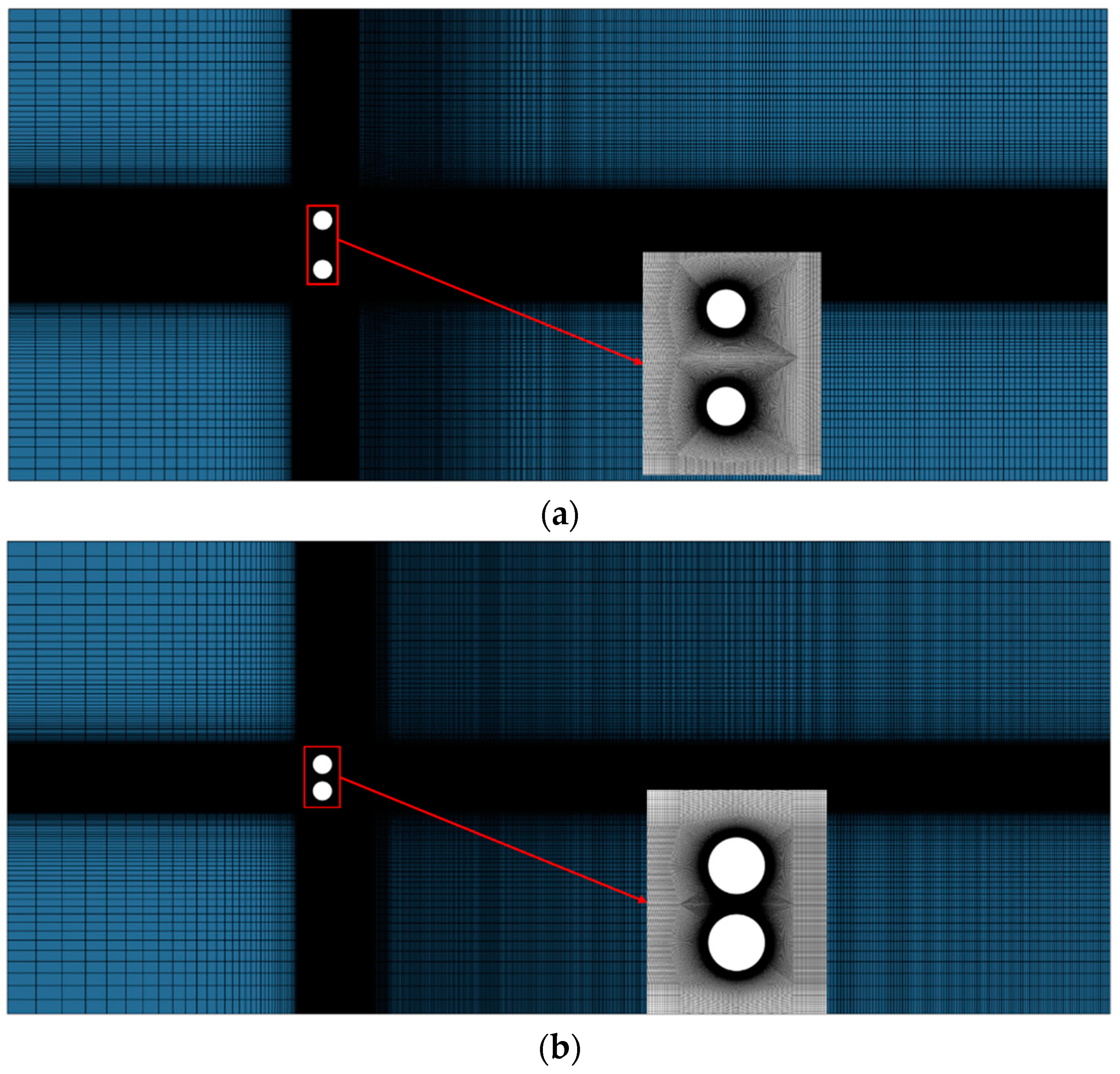
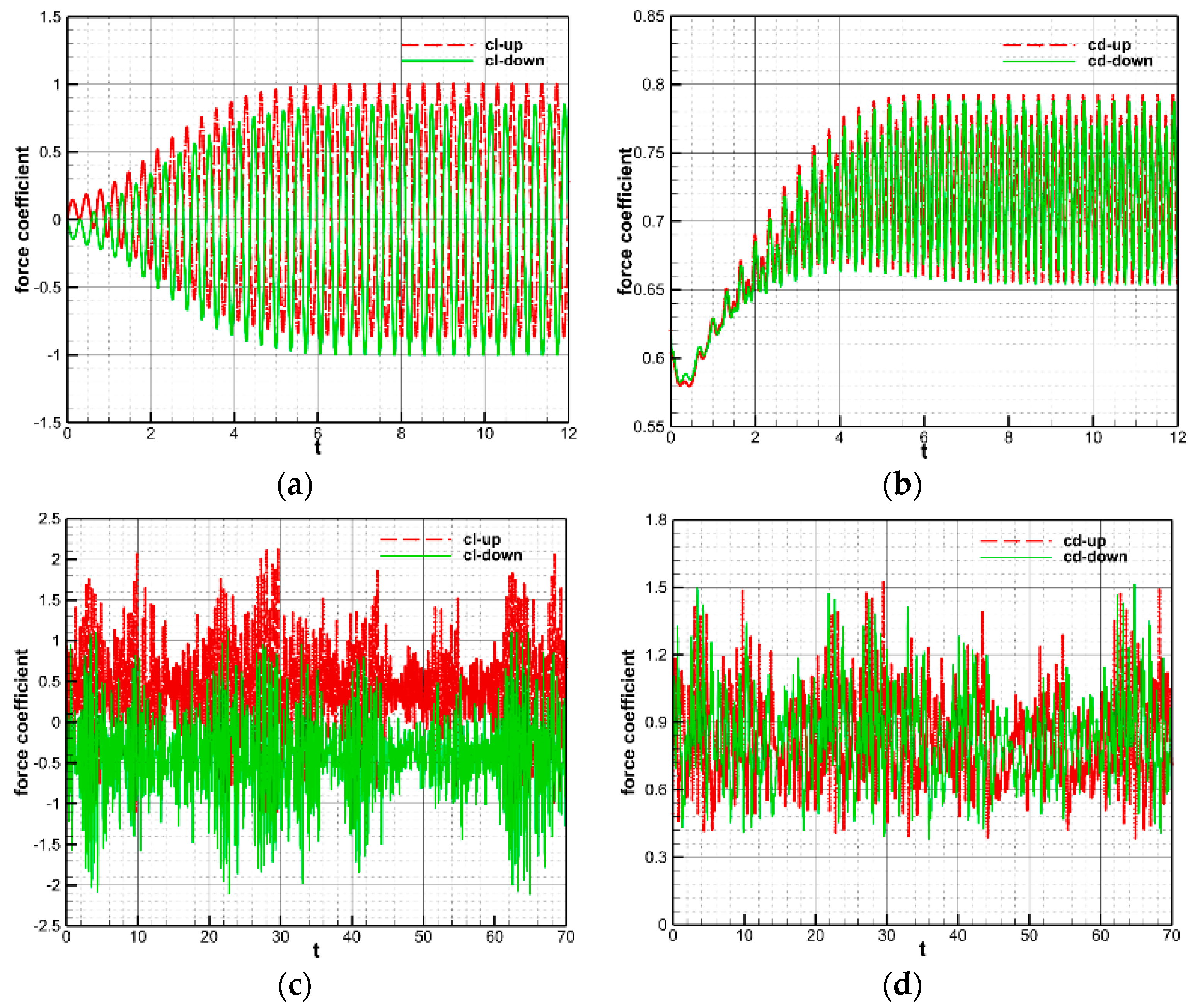

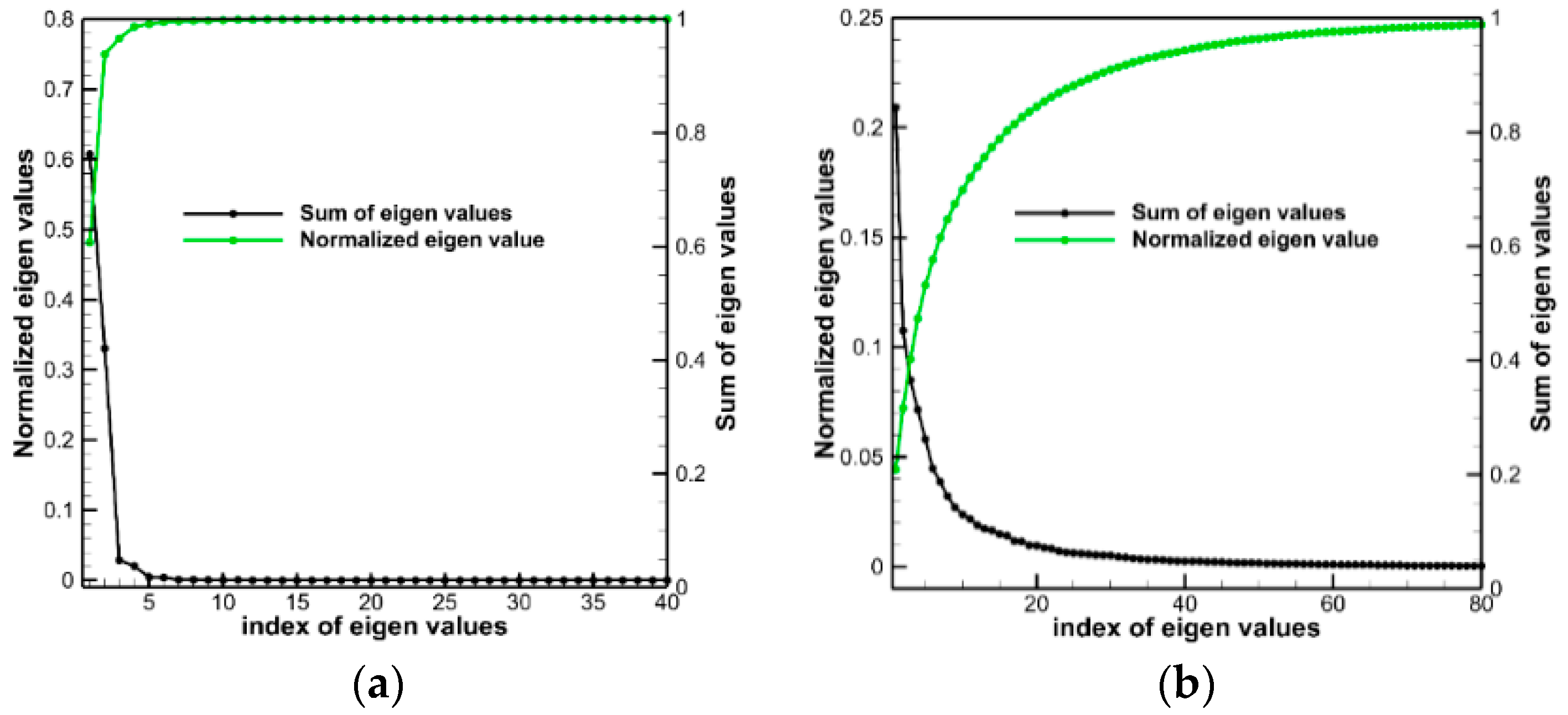

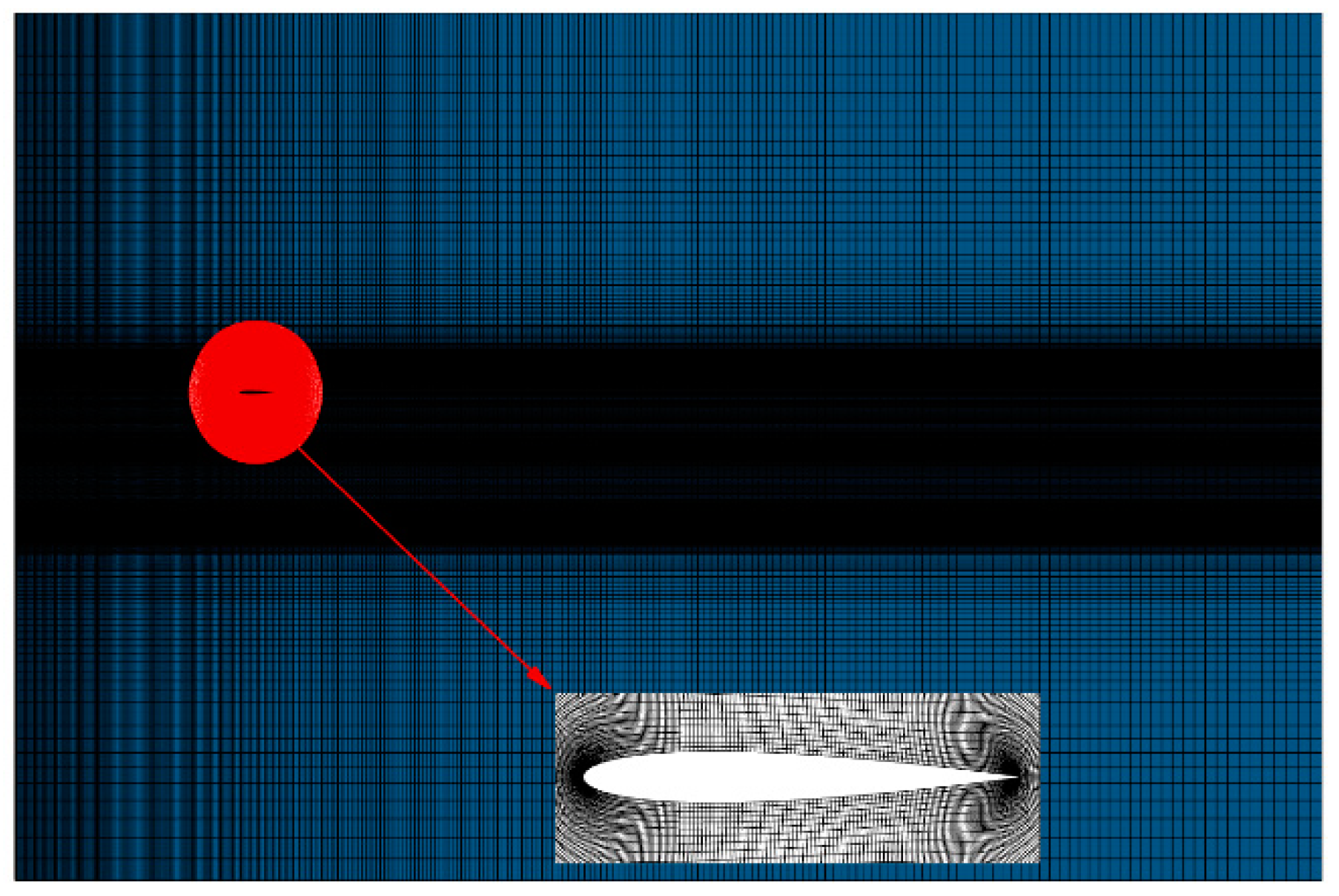

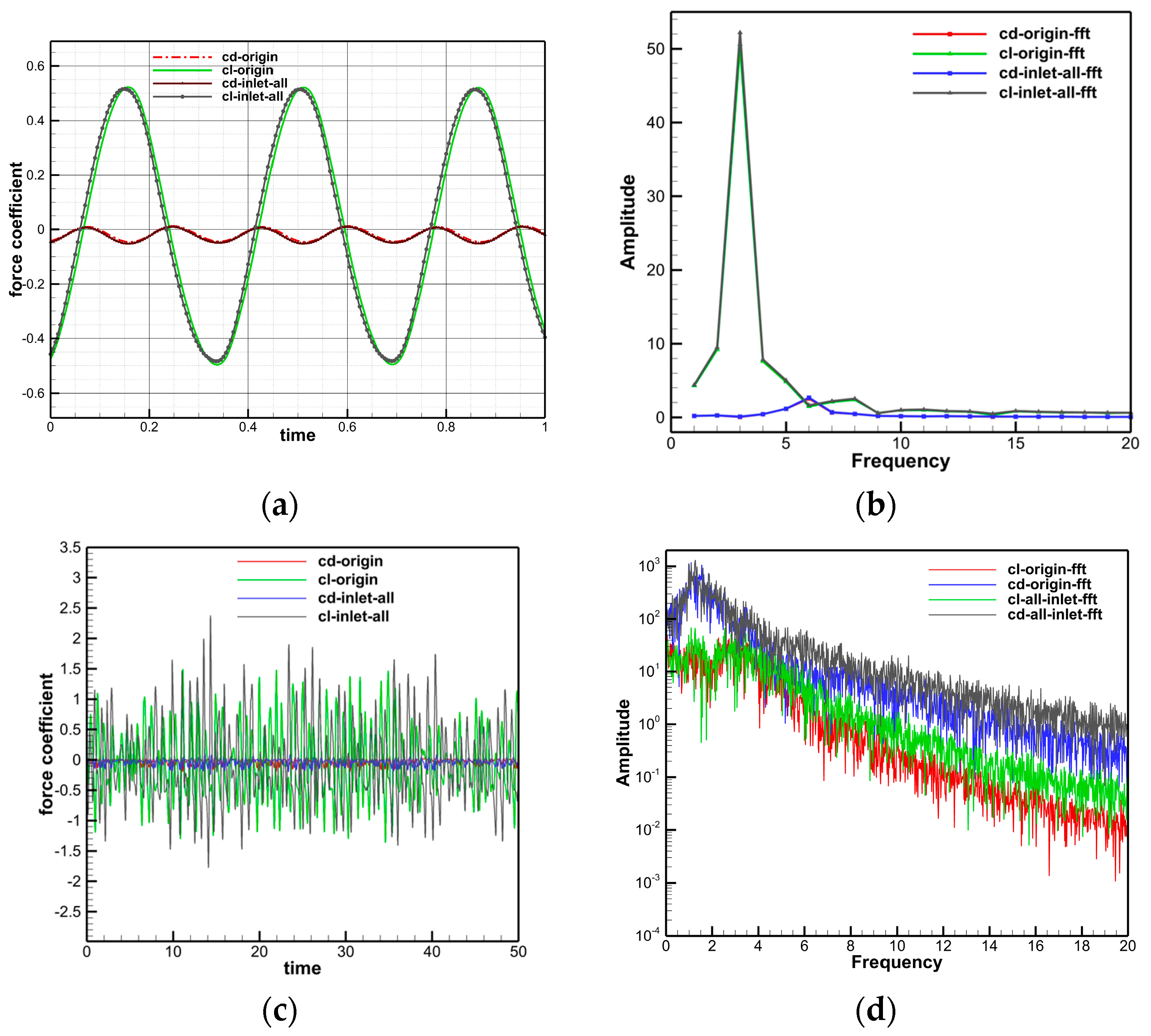


| Parameter | St | |||||
|---|---|---|---|---|---|---|
| Reference | Max | Min | Max | Min | ||
| Present study | 0.54 | −0.54 | 1.34 | 1.261 | 0.2 | |
| Wu and Hu (2006) [22] | 0.586 | −0.582 | 1.384 | 1.322 | 0.19 | |
| DW (2010) [23] | 0.594 | −0.593 | 1.56 | 1.49 | 0.2 | |
| Chen et al. (1999) [24] | 0.63 | −0.63 | 1.53 | 1.43 | 0.18 | |
| Martinez (1979) [25] | 0.70 | 1.30 | 0.19 | |||
| (a) Contour Plot of Each Mode | (b) Temporal Evolution of Mode Coefficients | (c) Spectral Analysis of Mode Coefficients |
|---|---|---|
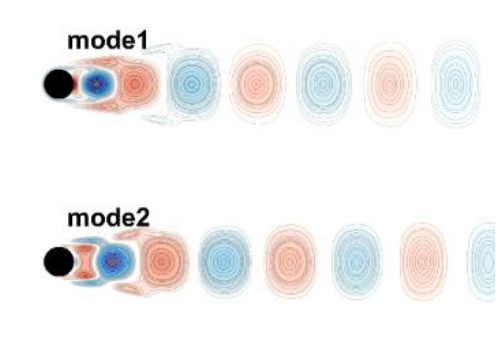 |  |  |
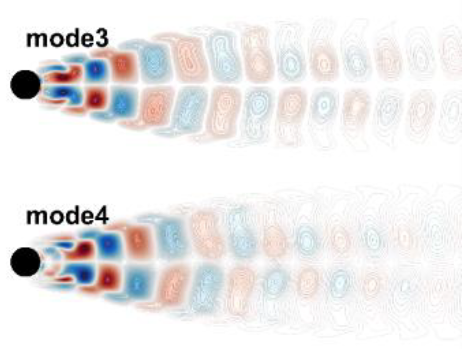 | 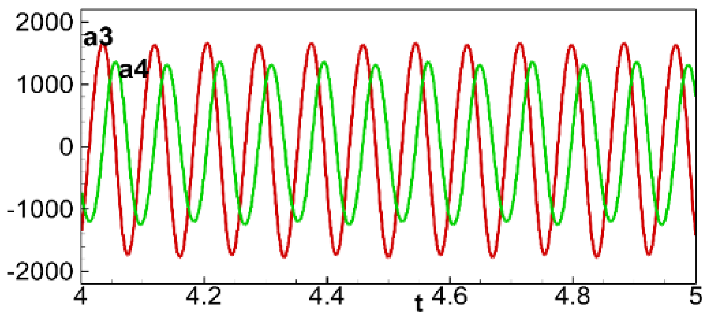 | 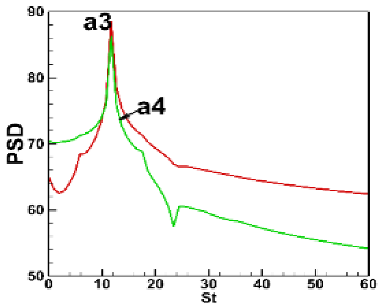 |
 | 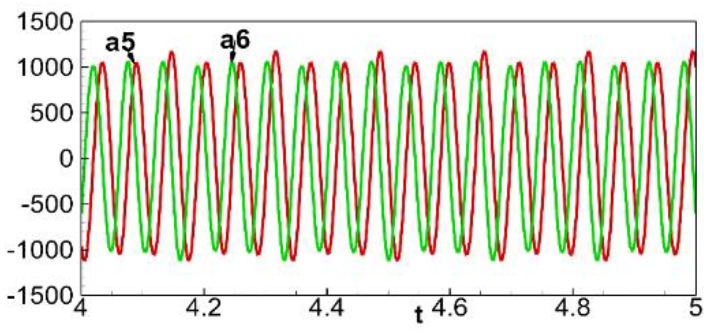 | 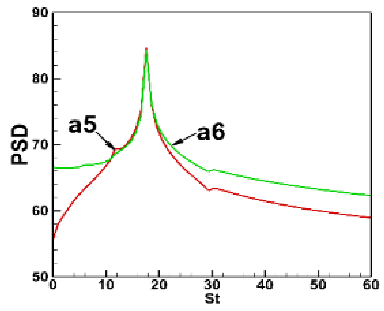 |
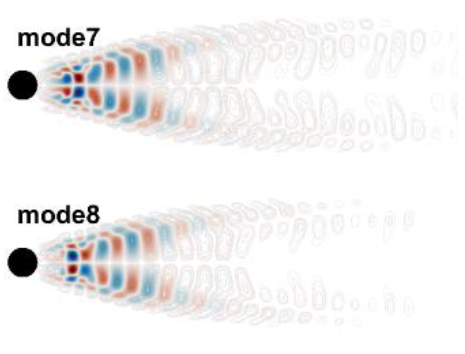 | 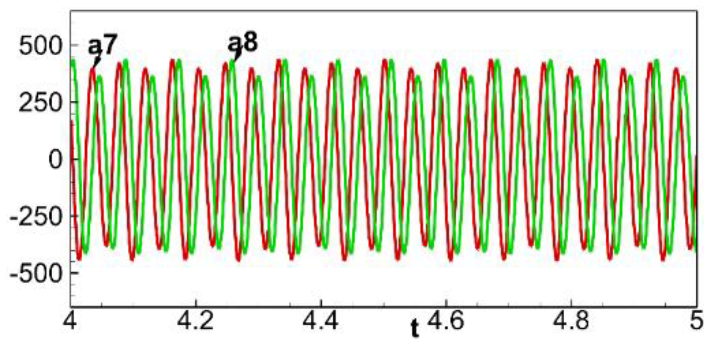 | 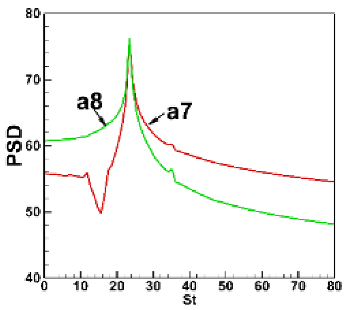 |
| (a) G = 1.5 | (b) G = 0.35 |
|---|---|
 | 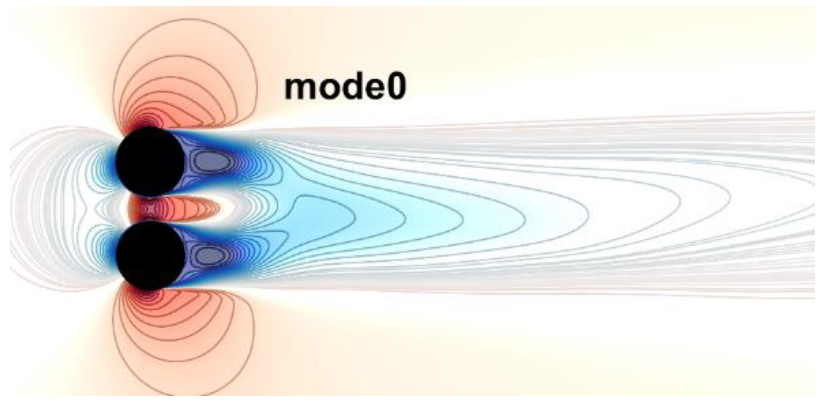 |
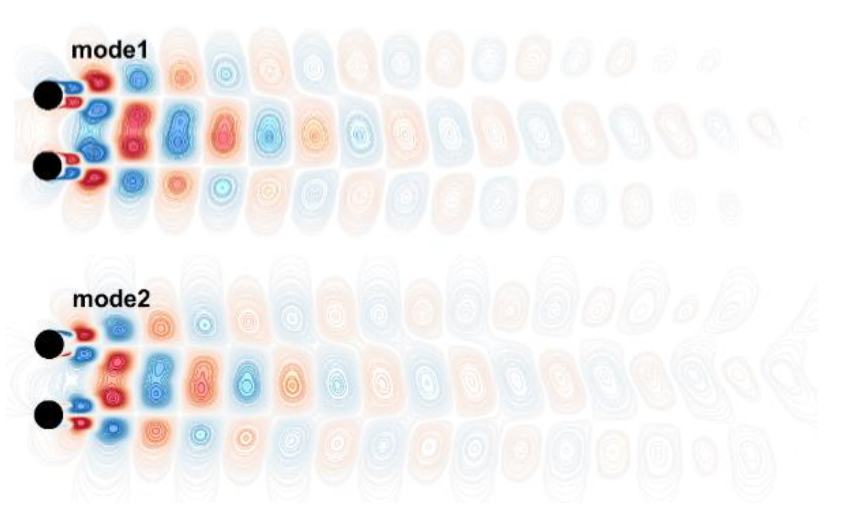 | 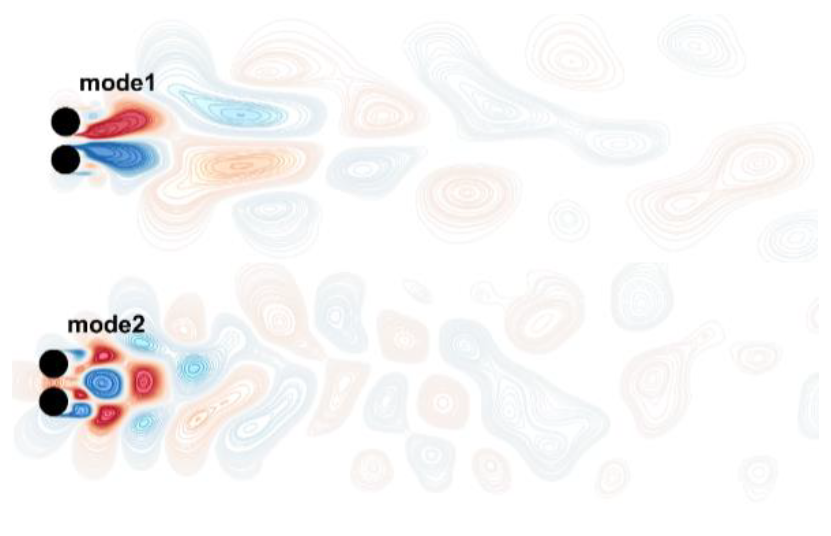 |
 | 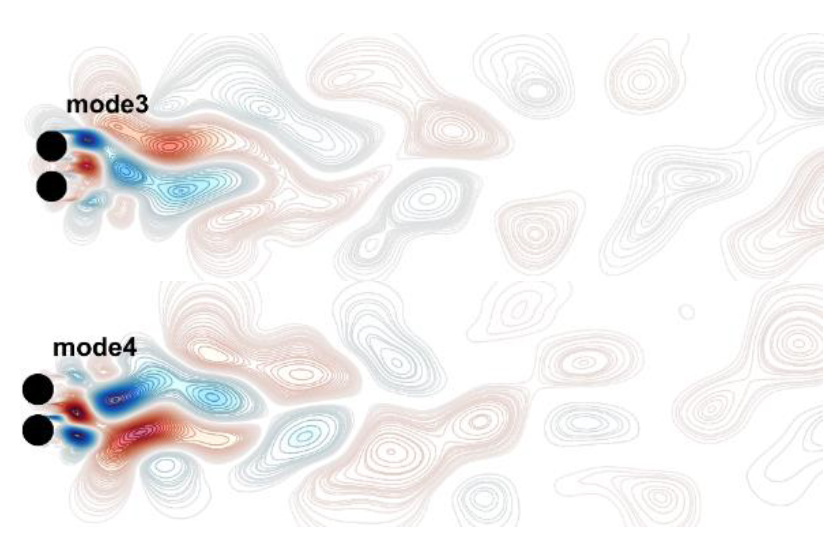 |
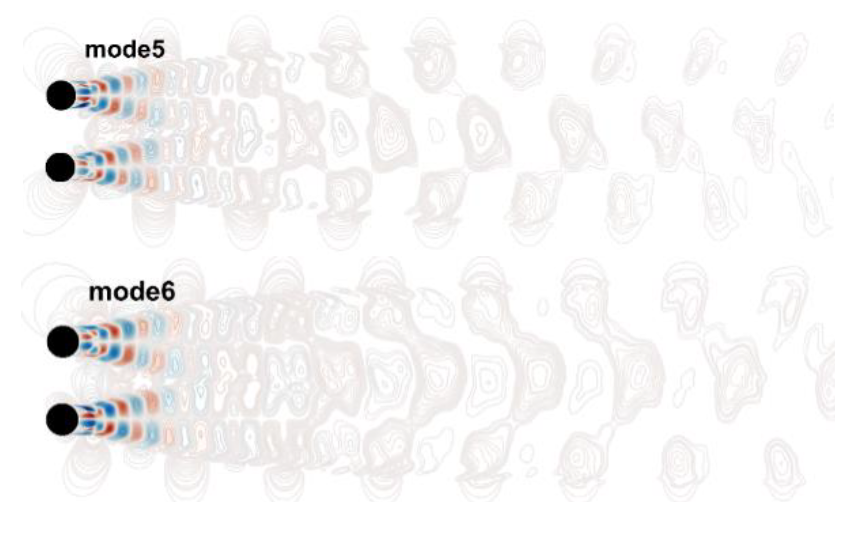 | 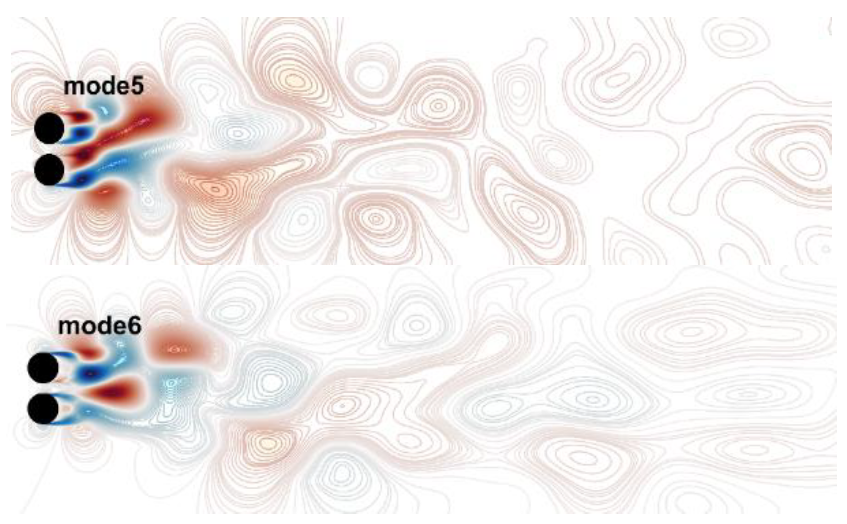 |
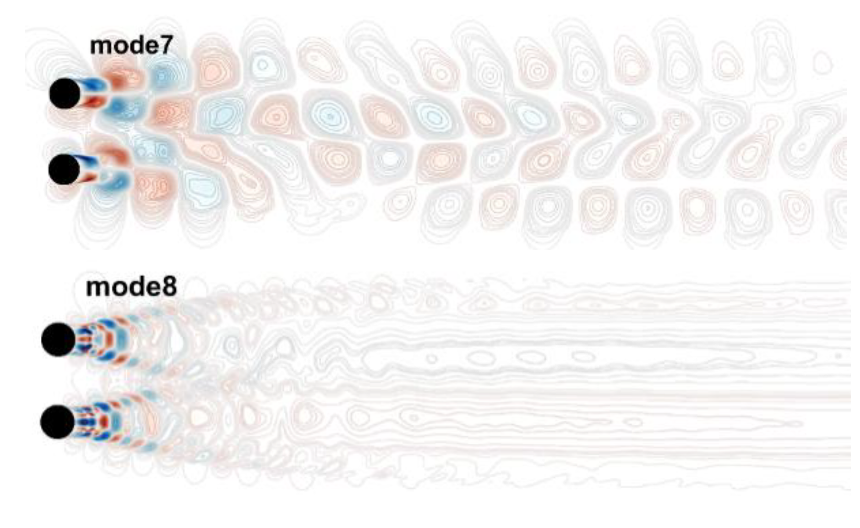 | 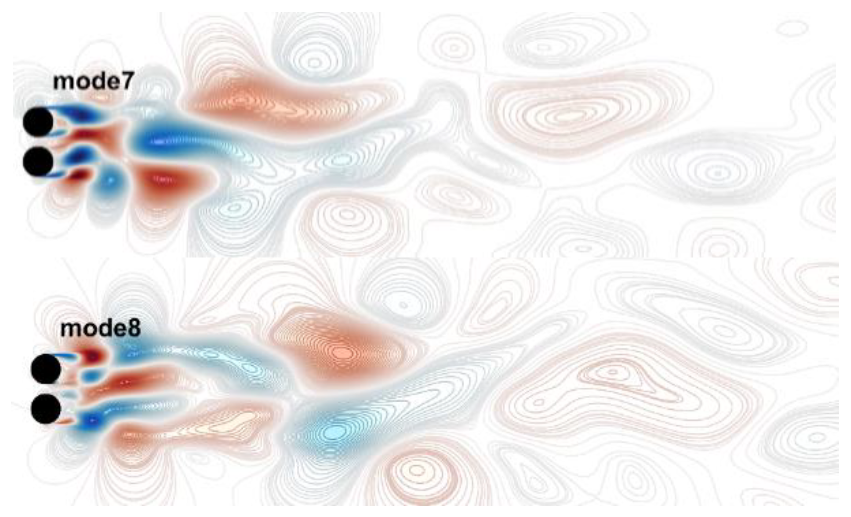 |
| Object 1 | Object 2 | Object 3 | |
|---|---|---|---|
| G = 1.5 |  |  | 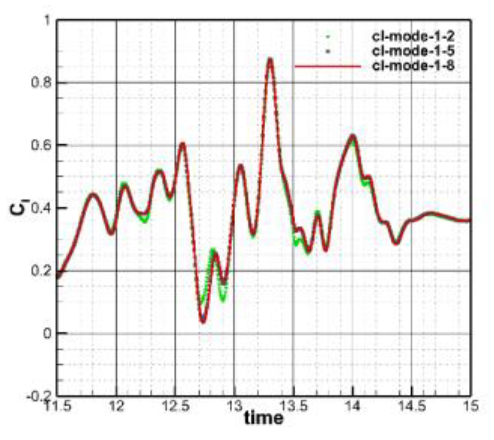 |
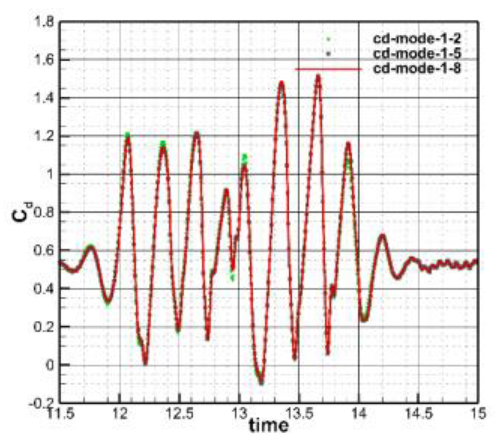 | 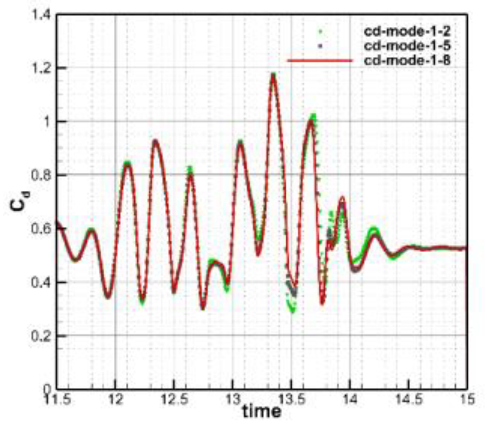 | 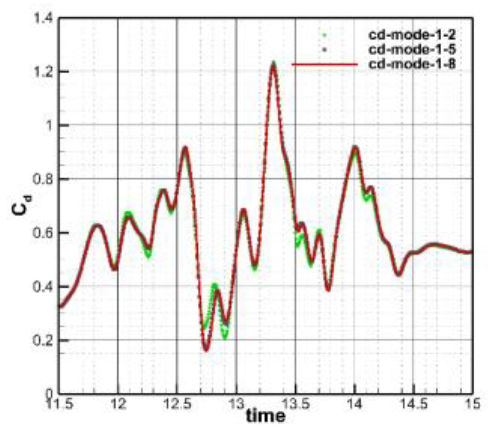 | |
| G = 0.35 |  | 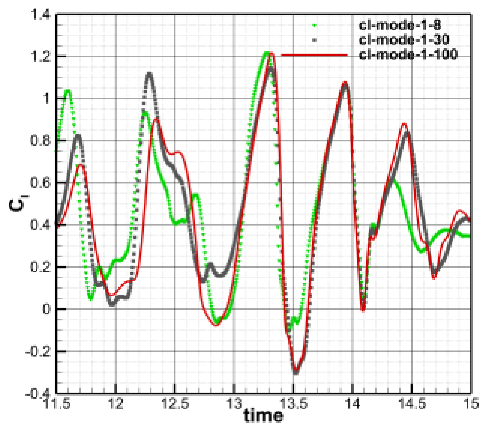 | 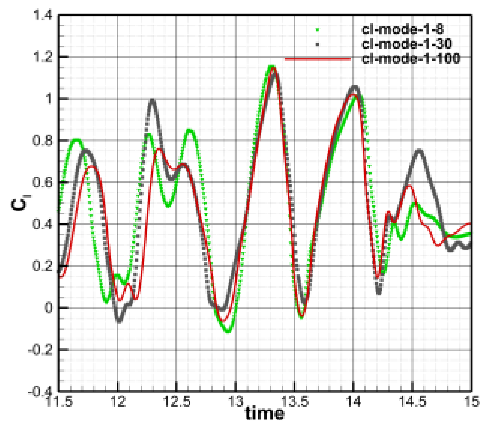 |
 | 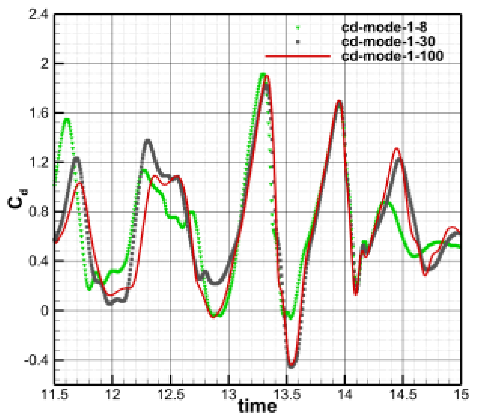 |  |
| l = −0.5 | l = 0 | l = 0.5 | |
|---|---|---|---|
| G = 1.5 | 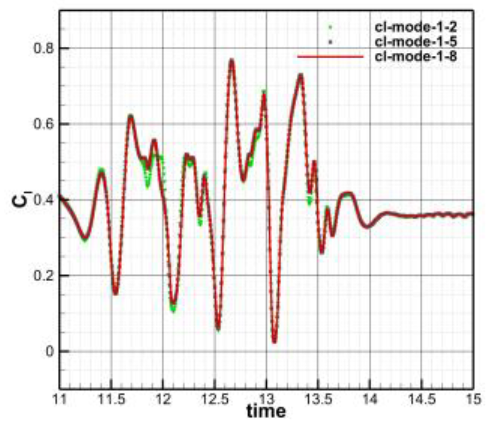 | 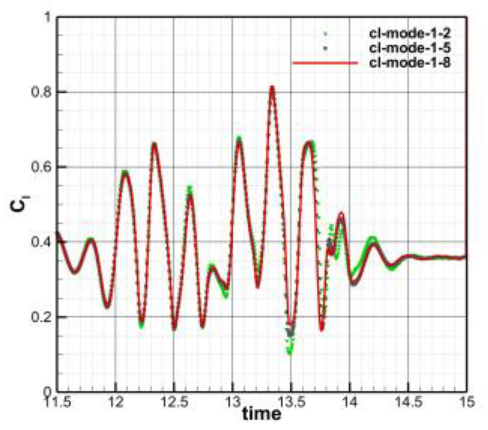 | 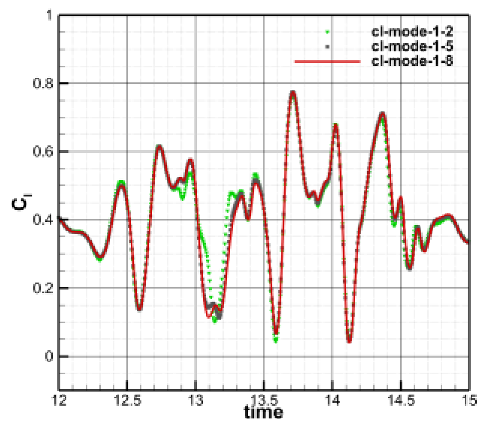 |
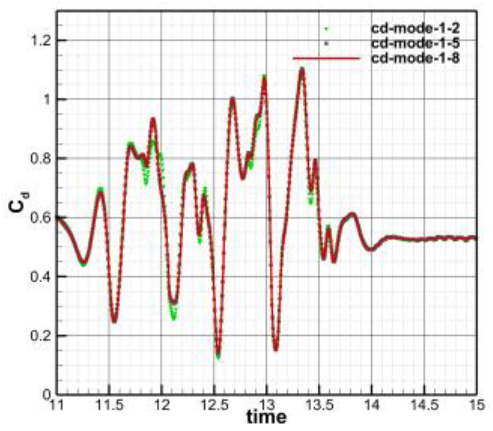 | 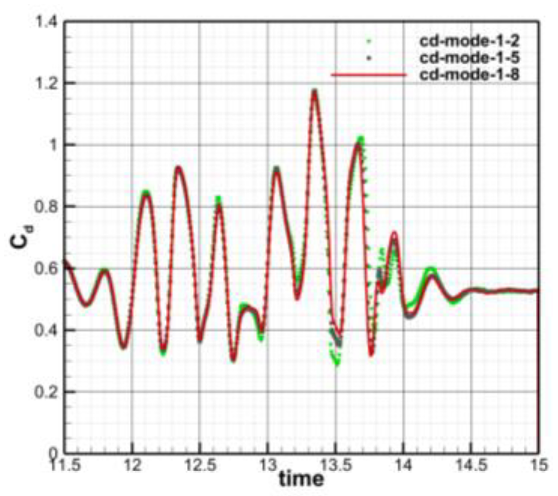 | 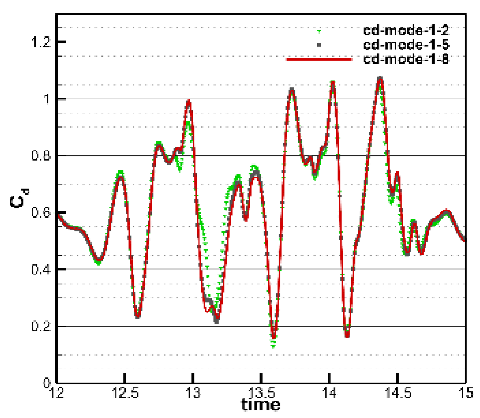 | |
| G = 0.35 | 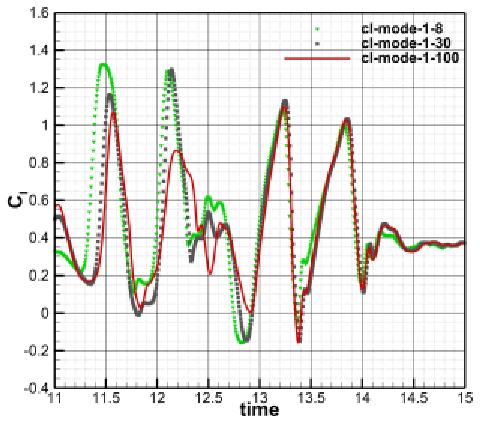 |  | 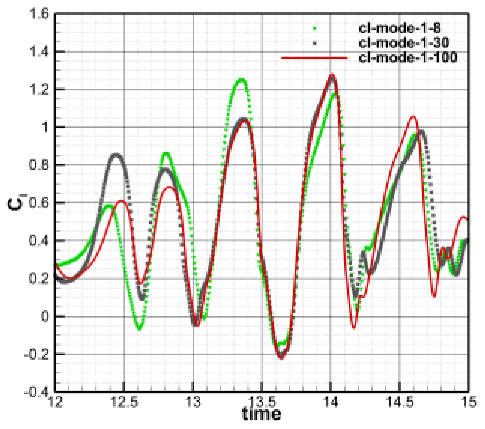 |
 | 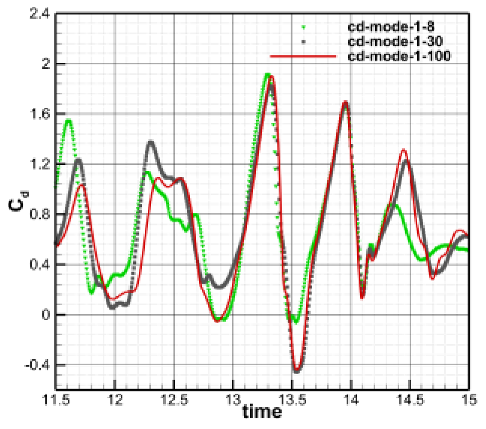 | 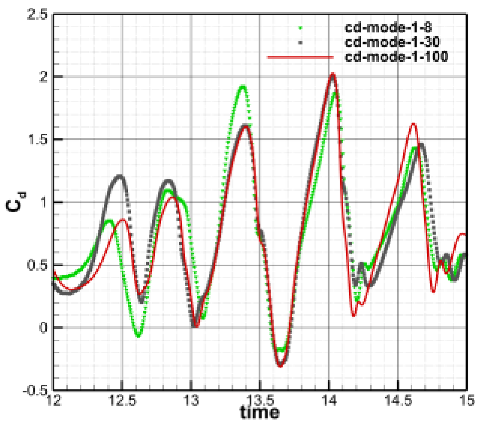 |
Disclaimer/Publisher’s Note: The statements, opinions and data contained in all publications are solely those of the individual author(s) and contributor(s) and not of MDPI and/or the editor(s). MDPI and/or the editor(s) disclaim responsibility for any injury to people or property resulting from any ideas, methods, instructions or products referred to in the content. |
© 2023 by the authors. Licensee MDPI, Basel, Switzerland. This article is an open access article distributed under the terms and conditions of the Creative Commons Attribution (CC BY) license (https://creativecommons.org/licenses/by/4.0/).
Share and Cite
Fu, J.; Wang, J.; Wu, J.; Xu, K.; Tian, S. Investigation of the Influence of Wake Field Characteristic Structures on Downstream Targets Using the POD Method. Aerospace 2023, 10, 824. https://doi.org/10.3390/aerospace10090824
Fu J, Wang J, Wu J, Xu K, Tian S. Investigation of the Influence of Wake Field Characteristic Structures on Downstream Targets Using the POD Method. Aerospace. 2023; 10(9):824. https://doi.org/10.3390/aerospace10090824
Chicago/Turabian StyleFu, Jiawei, Junhui Wang, Jifei Wu, Ke Xu, and Shuling Tian. 2023. "Investigation of the Influence of Wake Field Characteristic Structures on Downstream Targets Using the POD Method" Aerospace 10, no. 9: 824. https://doi.org/10.3390/aerospace10090824
APA StyleFu, J., Wang, J., Wu, J., Xu, K., & Tian, S. (2023). Investigation of the Influence of Wake Field Characteristic Structures on Downstream Targets Using the POD Method. Aerospace, 10(9), 824. https://doi.org/10.3390/aerospace10090824







